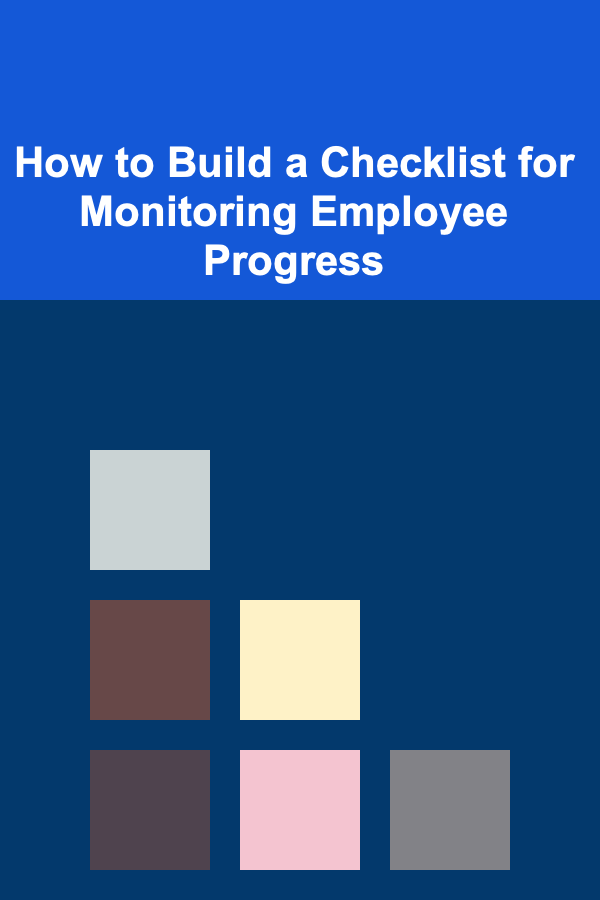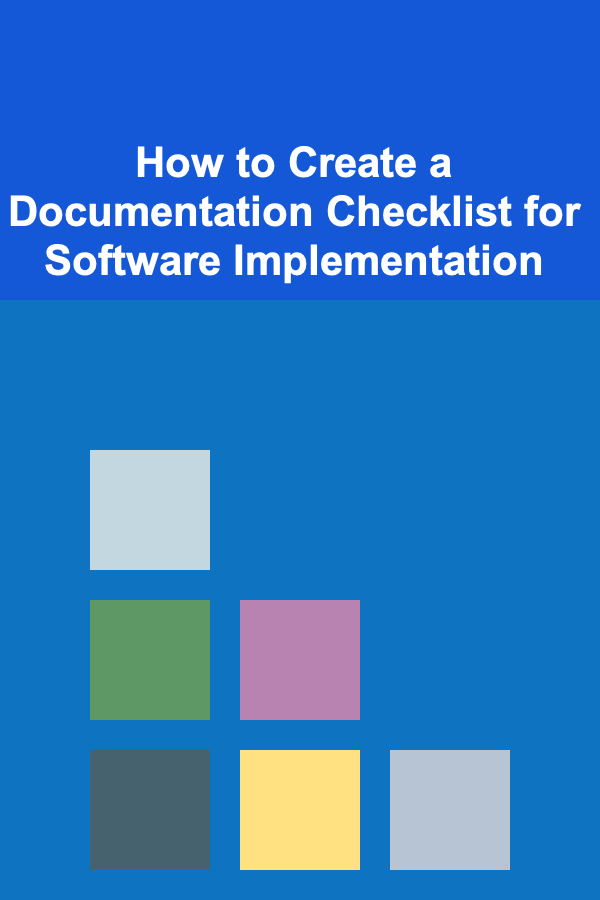
10 Tips for Improving Your Developer Productivity
ebook include PDF & Audio bundle (Micro Guide)
$12.99$10.99
Limited Time Offer! Order within the next:
Not available at this time

In the fast-paced world of software development, maintaining high levels of productivity is essential for delivering quality code on time and continuously improving as a developer. Productivity in development doesn't just mean writing more lines of code; it's about working smarter, managing time efficiently, and focusing on the tasks that drive the most value. Whether you're a beginner or an experienced developer, the following tips will help you enhance your productivity, streamline your workflow, and ultimately become a more effective software engineer.
Master Your Development Environment
Your development environment plays a crucial role in how efficiently you work. A well-configured setup can save you a significant amount of time and effort. Here's how to optimize your environment:
- Choose the Right IDE: The integrated development environment (IDE) or text editor you use can greatly impact your productivity. Popular IDEs like Visual Studio Code, IntelliJ IDEA, and Eclipse come with various features that help automate mundane tasks such as code formatting, error checking, and debugging.
- Customize Your Tools: Customize your editor to suit your workflow. This could involve configuring themes, fonts, and layout preferences that make the environment more comfortable for long coding sessions. You can also install extensions or plugins that add features like auto-completion, code linting, and version control.
- Master Keyboard Shortcuts: The time you save by using keyboard shortcuts instead of relying on the mouse adds up quickly. Learn and master the most common shortcuts for your IDE or text editor.
- Utilize Version Control Systems: Tools like Git are essential for collaboration and managing code changes. Using version control efficiently will help you track your work, collaborate better with teammates, and easily revert changes when something goes wrong.
Plan Your Work in Sprints
Following an agile development approach, even in personal projects, can help you structure your work better and improve your focus. Here's how to approach it:
- Break Down Tasks: Large projects can feel overwhelming. To avoid procrastination and mental fatigue, break down tasks into smaller, more manageable chunks. Define specific goals for each sprint, such as completing a feature or fixing a bug, and set deadlines to track progress.
- Use a Task Board: Whether physical or digital (using tools like Trello, Jira, or GitHub Projects), a task board allows you to visualize the work that needs to be done and track progress. Breaking down tasks into "To Do," "In Progress," and "Completed" columns can make it easier to stay on track.
- Review and Reflect: After each sprint, take some time to reflect on what went well and what could be improved. Did you meet your deadlines? Were there any obstacles that hindered your productivity? This reflection will help you continuously improve your approach in future sprints.
Focus on One Task at a Time
In the digital age, distractions are everywhere. While it may be tempting to juggle multiple tasks at once, multitasking often leads to mistakes and decreased efficiency. Here's how to stay focused:
- Limit Interruptions: Minimize distractions by setting boundaries. Turn off notifications for emails, chat apps, and social media during work hours. Let your colleagues know when you are in a focused work session and prefer not to be interrupted.
- Use Time-Blocking: Block off time on your calendar for focused work. For example, you can designate a two-hour block of time to focus solely on coding. During this time, work with complete concentration and avoid jumping between tasks.
- Prioritize: Focus on completing the most important or urgent tasks first. The Pomodoro technique, which involves working in 25-minute intervals with short breaks in between, is a great way to stay focused and make steady progress on tasks.
Automate Repetitive Tasks
Many tasks in software development are repetitive and time-consuming. Automating these tasks can free up your time and mental energy for more important work. Here are some ideas for automation:
- Code Formatting: Use linters and formatters (such as Prettier or ESLint) to automatically format your code according to a consistent style. This reduces the time spent manually fixing formatting issues and ensures that your codebase is consistent.
- Automate Testing: Implement unit tests and automated testing frameworks to test your code automatically. Continuous Integration (CI) tools like Jenkins, GitLab CI, or GitHub Actions can automatically run tests whenever you push code, ensuring that your changes don't break the codebase.
- Set Up Code Deployment: Automate the deployment process using tools like Docker or Kubernetes. Continuous Delivery (CD) pipelines can help deploy code to staging or production environments with minimal manual intervention, saving time and reducing errors.
Write Clean, Maintainable Code
Writing clean, maintainable code isn't just a best practice---it's an investment in your future productivity. The more maintainable your code is, the less time you'll spend debugging and refactoring in the future. Here's how to improve code quality:
- Follow Coding Standards: Adhere to industry standards and best practices for your language. Use meaningful variable names, write self-explanatory functions, and keep your code modular and reusable.
- Document Your Code: Write comments and documentation to explain complex code sections. Future-you (or other developers) will thank you when you come back to the code after a few months and need to figure out what it does.
- Refactor Regularly: Don't wait until your code becomes messy. Continuously refactor your code to improve its readability and performance. Regularly revisiting your code helps identify and eliminate redundancies.
Keep Learning and Stay Updated
Technology is constantly evolving, and staying up-to-date with new tools, languages, and frameworks is crucial for maintaining productivity. Here's how to stay ahead:
- Read Blogs and Books : Subscribe to blogs, read books, and follow experts in the field to stay informed about new trends and tools. Websites like Medium, Dev.to, and Stack Overflow can be great sources of information.
- Take Online Courses: Invest in your professional development by taking online courses on platforms like Udemy, Coursera, or Pluralsight. Regularly learning new skills or improving existing ones keeps your knowledge fresh and ensures that you're using the best tools available.
- Join Developer Communities: Participate in developer communities (online or in person). Sharing knowledge and asking questions in forums like Stack Overflow, GitHub Discussions, or Reddit can help you learn from others' experiences.
Take Breaks and Avoid Burnout
Working long hours without breaks can lead to burnout, which severely affects your productivity. To maintain a high level of productivity over time, it's important to take regular breaks and avoid overworking yourself.
- Take Regular Breaks: Follow the Pomodoro technique or take longer breaks every hour. Getting away from your screen allows your mind to reset, which helps you return to your tasks with a fresh perspective.
- Set Boundaries: Set working hours and stick to them. It's important to separate work time from personal time to prevent burnout. Overworking can lead to mental fatigue, decreased productivity, and poor decision-making.
- Prioritize Self-Care: Physical and mental health are just as important as work. Get enough sleep, exercise regularly, and eat healthy. Taking care of yourself will improve your focus and productivity in the long run.
Embrace Pair Programming
Pair programming is a practice in which two developers work together on the same code. One developer writes code while the other reviews and provides feedback in real-time. This collaborative approach can significantly improve productivity.
- Learn from Each Other: Pair programming allows you to learn from more experienced developers and share your own knowledge. It fosters collaboration, increases code quality, and helps identify bugs early in the process.
- Improve Code Quality: Working in pairs often results in better-quality code because both developers are actively engaged in problem-solving. They can catch mistakes and identify improvements more quickly than when working alone.
- Increase Accountability: Pair programming helps reduce the likelihood of procrastination and ensures that you're consistently moving forward on tasks.
Use Task Management Tools
Staying organized is key to boosting your productivity. Task management tools help you keep track of your daily, weekly, and long-term goals. Popular tools like Trello, Asana, or Notion can help you break down your work, track progress, and manage deadlines.
- Create Task Lists: Use task management tools to create detailed lists of tasks and subtasks. Prioritize tasks and mark them as complete when finished to track your progress.
- Set Deadlines and Reminders: Set deadlines and reminders for each task to keep yourself on schedule. This helps you stay focused and ensures that tasks don't slip through the cracks.
Collaborate and Communicate Effectively
In many software development environments, you'll be working with teams. Effective collaboration and communication are critical for improving productivity in group settings.
- Use Collaboration Tools: Use communication tools like Slack, Microsoft Teams, or Discord to stay connected with your team. These tools can help you share information quickly, ask questions, and keep track of discussions.
- Clear and Concise Communication: Ensure that you communicate your thoughts clearly and concisely. Whether it's through code reviews, team meetings, or documentation, clear communication helps avoid misunderstandings and increases overall productivity.
- Give and Receive Feedback: Constructive feedback helps improve both individual and team productivity. Be open to receiving feedback from others and provide feedback in a constructive, helpful manner.
Conclusion
Improving developer productivity is a continuous process that requires discipline, organization, and a willingness to adapt to new methods. By optimizing your development environment, structuring your tasks effectively, automating repetitive processes, and focusing on self-care, you can maximize your productivity. Moreover, maintaining a learning mindset, collaborating effectively, and practicing good communication are key to working efficiently in team environments. By following these tips, you'll not only become a more productive developer but also set yourself on a path toward long-term success in your career.

How to Build a Checklist for Monitoring Employee Progress
Read More
How to Create a Documentation Checklist for Software Implementation
Read More
How to Incorporate Metallic Elements into Your Holiday Decor
Read More
How to Make Money with Deep Learning Without a Large Investment
Read More
How to Use Rugs and Carpets to Enhance Soundproofing
Read More
How to Create Interactive Greeting Cards
Read MoreOther Products

How to Build a Checklist for Monitoring Employee Progress
Read More
How to Create a Documentation Checklist for Software Implementation
Read More
How to Incorporate Metallic Elements into Your Holiday Decor
Read More
How to Make Money with Deep Learning Without a Large Investment
Read More
How to Use Rugs and Carpets to Enhance Soundproofing
Read More